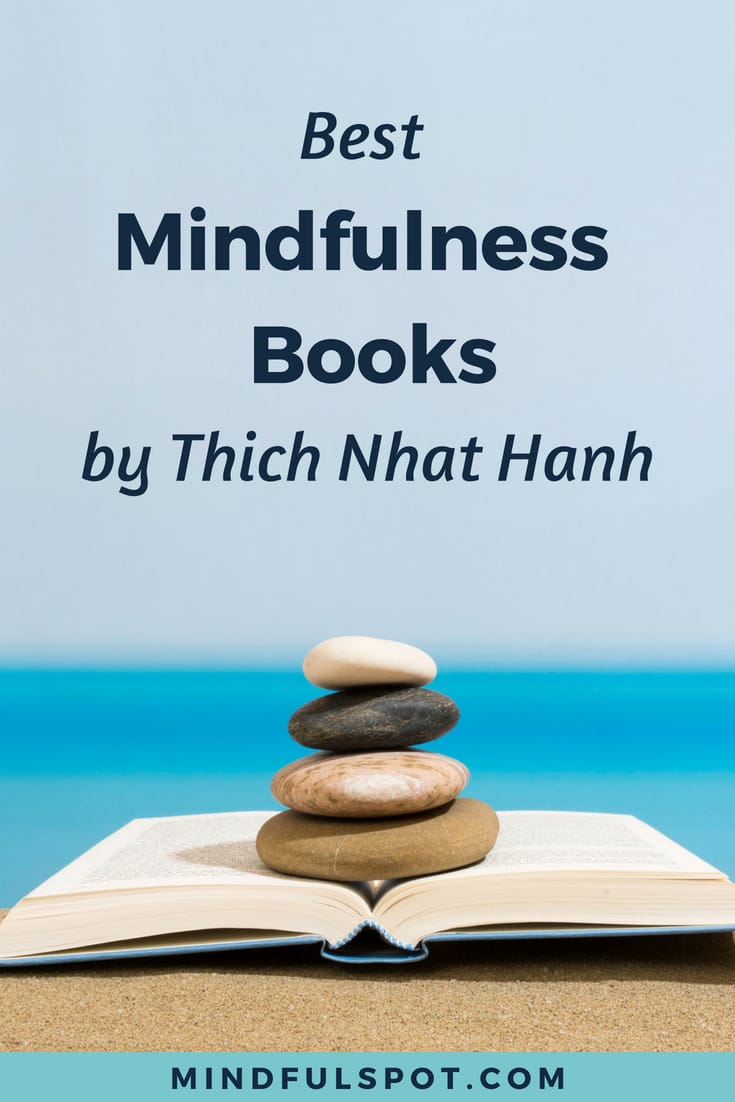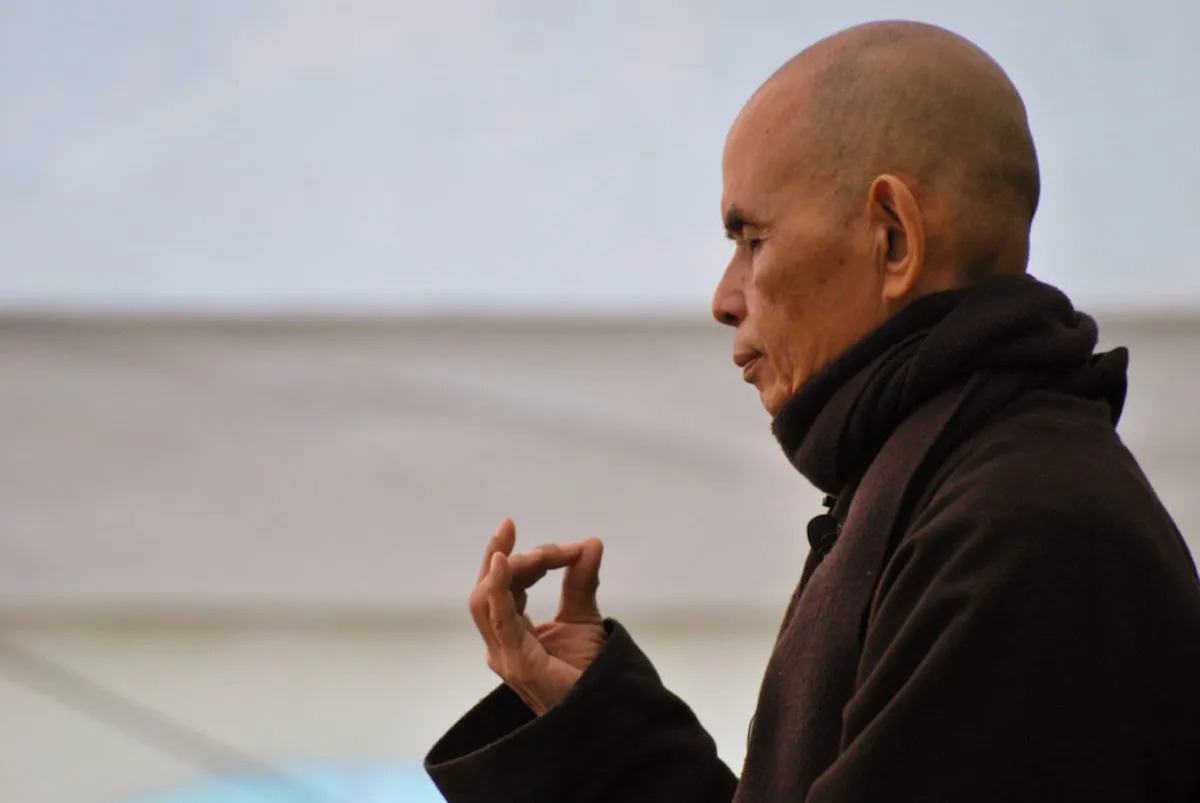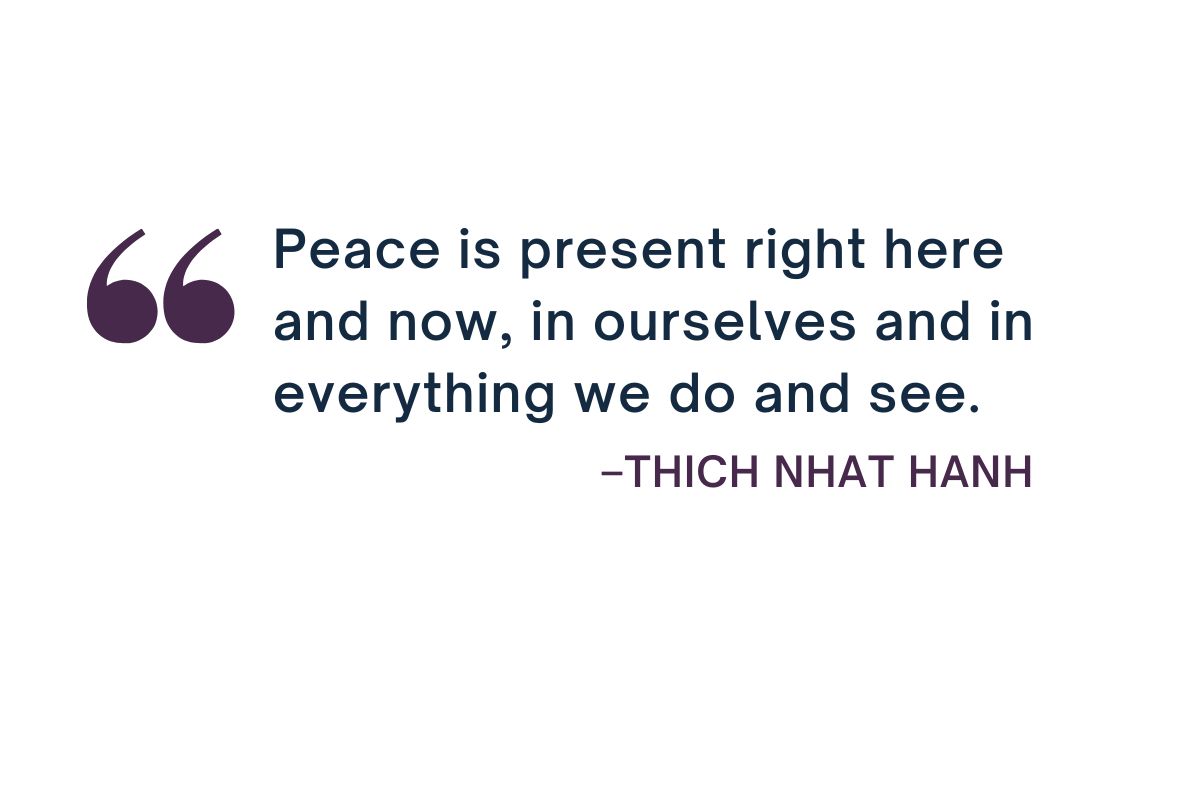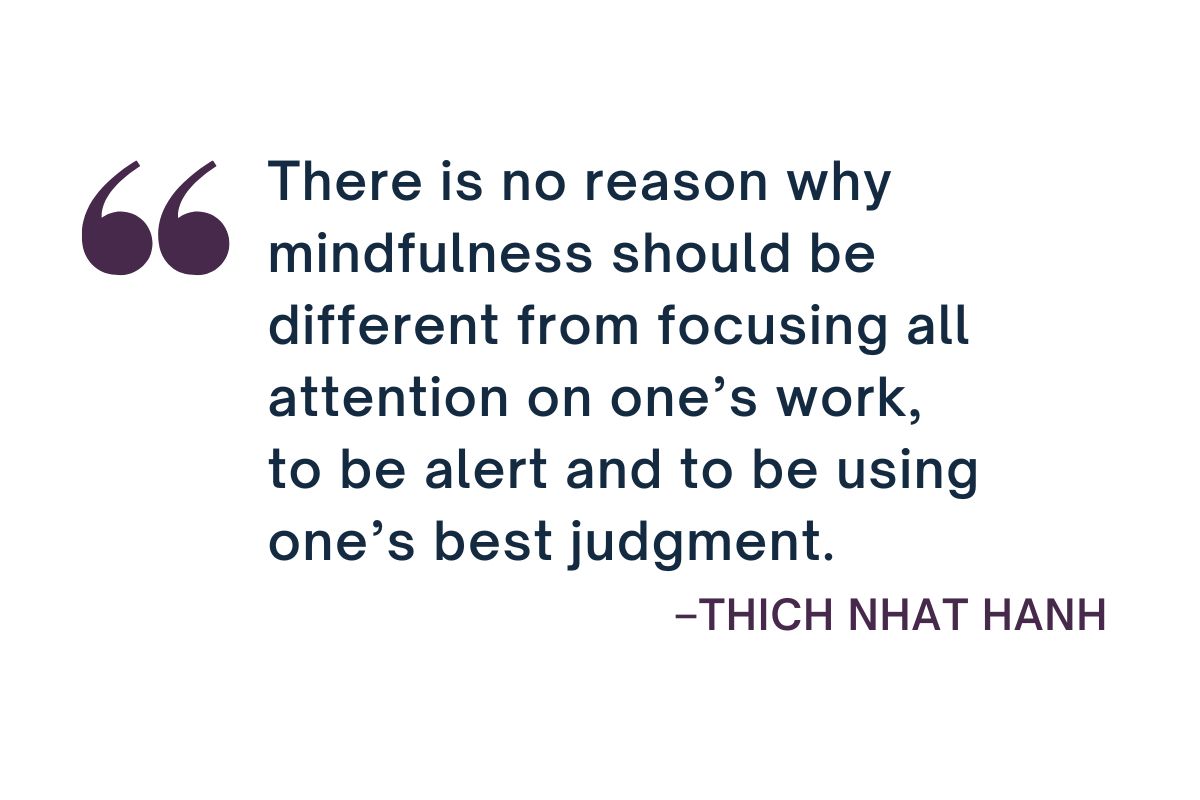What mindfulness books should you read?
Learning more about mindfulness and applying that knowledge in your daily life is essential for your spiritual practice. That is why you always need to have a list of the best mindfulness books to read whenever you have free time.
The books I’m going to mention in this post were written by a renowned Zen monk Thich Nhat Hanh. He is at the forefront of introducing mindfulness to the Western world. All his books teach us the key concepts of mindful living through simple and clear explanations.
Best Mindfulness Books by Thich Nhat Hanh
1. The Miracle of Mindfulness
In The Miracle of Mindfulness (paperback | audiobook), Zen master Thich Nhat Hanh offers gentle anecdotes and practical exercises as a means of learning the skills of mindfulness — being awake and fully aware.
From washing the dishes to answering the phone to peeling an orange, he reminds us that each moment holds within it an opportunity to work toward greater self-understanding and peacefulness.
The author writes:
Be alert and ready to handle ably and intelligently any situation which may arise — this is mindfulness. There is no reason why mindfulness should be different from focusing all one’s attention on one’s work, to be alert and to be using one’s best judgment. During the moment one is consulting, resolving, and dealing with whatever arises, a calm heart and self-control are necessary if one is to obtain good results.
2. Peace Is Every Step
In the rush of modern life, we tend to lose touch with the peace that is available in each moment.
In Peace Is Every Step (paperback | audiobook), world-renowned Zen master, spiritual leader, and author Thich Nhat Hanh shows us how to make positive use of the very situations that usually pressure and antagonize us.

FREE Self-Test: How Spiritual Are You?
For him, a ringing telephone call can be a signal to call us back to our true selves. Dirty dishes, red lights, and traffic jams are spiritual friends on the path to “mindfulness” — the process of keeping our consciousness alive to our present experience and reality.
The most profound satisfaction, the deeper feelings of joy and completeness lie as close at hand as our next aware breath and the smile we can form right now.
The author writes:
Peace is present right here and now, in ourselves and in everything we do and see. Every breath we take, every step we take, can be filled with peace, joy, and serenity. The question is whether or not we are in touch with it. We need only to be awake, alive in the present moment.
3. Transformation and Healing
Transformation and Healing presents one of the Buddha’s most fundamental teachings and the foundation of all mindfulness practice.
The Sutta of the Four Establishments of Mindfulness has been studied, practiced, and handed down with special care from generation to generation for 2,500 years.
This sutra teaches us how to deal with anger and jealousy, to nurture the best qualities in our children, partners, and friends, and to greet death with compassion and equanimity.
Thich Nhat Hanh’s commentary is organized into twenty exercises that guide readers through the fundamentals of Buddhist practice and offer insights into mindfulness in daily life.
The author writes:
To be able to breathe can be a great source of real happiness, but often, unless we have a congested nose or asthma, we are not able to realize that. To be able to see beautiful colors and forms is happiness, but often only after we have lost our sight do we become aware of this. Having sound and healthy limbs to be able to run and jump, living in an atmosphere of freedom, not being separated from our family—all these things and thousands more can be elements of happiness. But we rarely remember, and happiness slips from our grasp as we chase other things which we believe to be necessary for our happiness. Generally, only after we lose an element of happiness do we appreciate it.
4. The Path of Emancipation
In May 1998, more than four hundred practitioners from around the world joined Thich Nhat Hanh’s first 21-day retreat in North America in Vermont to experience mindfulness.
The Path of Emancipation, which transcribes this retreat, comprises an in-depth instruction in the “Sixteen Ways of Breathing” from the Discourse on the Full Awareness of Breathing.
Applying the teachings to everyday life, Thich Nhat Hanh shows how it is possible to slow down and get in touch with our breathing. He teaches the practice of mindful breathing, walking, and sitting and how the practice of mindfulness releases suffering and leads to a wholesome and happy life.
The author writes:
It is so common to struggle in daily life. We are rarely at ease in the here and now, always struggling, trying to attain something. The first element of the practice is to stop struggling. Just allow yourself to be. … Allow yourself to be a drop of water in the river, and just flow together with that river.
5. Your True Home
Bringing the energy of the true presence into our lives really does change things for the better — and all it takes is a little training.
Your True Home (paperback | audiobook) is a treasury of 365 gems of daily wisdom from one of the most beloved Buddhist teachers of our age. It will be a help and support for anyone who wants to train to meet every moment of life with 100 percent attention.
Thich Nhat Hanh shows how practicing mindfulness can transform every area of our lives — and how its benefits radiate beyond us to affect other and the whole, larger world.
The author writes:
Your true home is in the here and the now.
6. Mindful Movements
Initially developed by Zen Master Thich Nhat Hanh as stretching breaks between long periods of sitting meditation, the Mindful Movements have become a popular tool to reduce stress and tension.
These simple and effective movements, based in yoga and Tai Chi, can increase mental, emotional, and physical well-being, and are suitable for people with a wide range of physical abilities.
Each exercise is fully illustrated by Wietske Vriezen, a Dutch artist, and movement teacher. The book includes a 35-minute DVD of Thich Nhat Hanh and members of his Plum Village Sangha demonstrating the Mindful Movements.
7. Savor: Mindful Eating, Mindful Life
It’s not uncommon for some of us to be in a cycle of guilt and shame when it comes to food. As a result, we spend many hours worrying about what we ate or if we exercised enough.
In Savor: Mindful Eating, Mindful Life (paperback | audiobook), famous Zen master Thich Nhat Hanh and nutritionist Dr. Lilian Cheung show us how to end weight loss struggles once and for all.
This book offers practical tips, including a nutrition guide, mindful living plan, and goal setting. Authors help us find the roots of our unhealthy habits and transform our behavior. The book teaches us how to integrate mindful practices into eating, exercise and other aspects of our lives.
The author writes:
Mindful eating means simply eating or drinking while being aware of each bite or sip.
8. You Are Here: Magic of the Present Moment
Based on a retreat that Thich Nhat Hanh led for Westerners, You Are Here (paperback | audiobook) offers a range of simple, effective practices for cultivating mindfulness, including awareness of breathing and walking, deep listening, and skillful speech.
You Are Here also offers guidance on healing emotional pain and manifesting real love and compassion in our relationships with others.
Simple, warm, direct, and startlingly potent, this book reveals the heart of the Buddhist path and helps us to reconnect with the joy and wonder of being alive, regardless of life’s changing circumstances.
The author writes:
The past no longer exists, and the future is not here yet. The only moment in which you can be truly alive is the present moment. The present moment is the destination, the point to arrive at. Every time you breathe in and take a step, you arrive: “Breathing in, I arrive. Breathing out, I arrive.”
Take a look at the selection above, choose one book for your reading list, and let me know your thoughts about it. Or tell me what other best mindfulness books I should include on this list.

FREE mindfulness resources for stress relief

I’m a freelance writer and mindfulness advocate behind this blog. I started my meditation practice in 2014, and in 2017 I launched this website to share what I learn with others. Here are the three things you can do here:
1. Schedule a free consult if you want to learn Buddhist meditation.
2. Download free mindfulness resources for stress relief
3. Join Patreon for exclusive content and community meetings.








Thank u !
Hey, I’m glad you liked the post 🙂